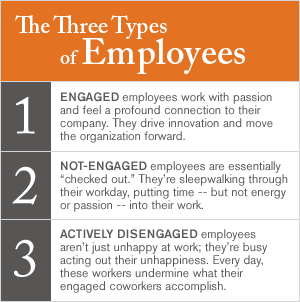
I’ve met a lot of business owners who started their company to follow their dreams, but over time the team has become a place of frustration for the employees and the owner. I recently read a book titled The Dream Manager, and it has some great concepts that you should consider in our efforts to build a fully engaged and loyal team.
The Dream Manager, written by Matthew Kelly, is a story of a janitorial service company that created a role called the “Dream Manager” as an effort to keep good employees and reduces the cost of the constant employee turnover. The book suggests that you will never be able to promote enough, give enough benefits, or pay enough money to keep people engaged and committed to your company unless your company takes an active role in helping them achieve their own dreams.
The reality is that most people don’t look at their job as part of their dreams, but rather as a way to fund their dreams off the clock. Subsequently, if we can find ways to help our employees achieve their dreams, we build loyal employees who will share their positive attitude back at the workplace and be more productive and loyal than ever.
A number of our Renaissance Executive Forum members provide lunch for their employees each day, offer special work schedules, and daycare for the children of employees. But this is NOT helping their employees reach their own dreams, it’s just making work more enjoyable (or tolerable in some cases). Be careful not to confuse offering Perks with Reaching Dreams.
Concerning yourself with your employee dreams may seem like a lot of work for a small company (or any size company) to handle. However, the cost of losing good employees, and keeping dis-engaged ones, costs companies Billions of dollars each year. (Read this article on the Cost of Great Leaders – Finding, Keeping or Losing them.) Here two key points from the book that you should consider at your own company.
Understand the Issues
The book starts out with the senior leadership trying to find out why they were experiencing a 400% turnover rate each year. They decided to do something crazy – they asked their employees about it! What they found out was that people were quitting because they struggled just to get to the work sites each night to clean the offices. Based on the feedback they got, the company decided to hire shuttles to transport workers each day and was able to reduce the turnover in half!
This is quite an out-of-the-box way of dealing with problems, but it’s important to note that the cost of the shuttle service was much less than the cost of the turnover; finding new workers, training them, the loss in overall productivity, the bad will this created with the client who did not get cleaning during the transition, and much more.
Take time to find out from your own employees, what makes their job tough. You would be amazed at how much you can learn from a candid discussion with your team about how things are going in the workplace. You can even call people who have recently left your company and get even more candid input. Be vulnerable and sincere in your approach and you may find the heart of the issue is something relatively simple to fix and can bring huge savings to your bottom-line.
Working for YOU is No One’s Dream
 We always hope our employees like the work they do, the people they work with and have a sincere dedication to our company. However, the reality is most do not.
We always hope our employees like the work they do, the people they work with and have a sincere dedication to our company. However, the reality is most do not.
According to the Gallup State of the Workplace Report for 2012, a staggering 70% of the workforce is not working to their full potential. ( 52% are not engaged, and another 18% are actively disengaged or engaged against you.)
What this means is that you need to find ways to engage people beyond the title, work or paycheck. The Dream Manager book explains how the janitorial company hired a manager to improve engagement and retention. The Dream Manager met monthly with each employee to understand their dream and help them create plans to reach it. Some dreams were as simple as learning to drive or going on a cool vacation. Others were more complicated like learning English or getting a college degree.
Notice that the company did not just write checks for everyone’s wants, or triple their salary so they could go on a trip to Europe. They helped them set up budgets and save money to reach their dreams. The employees began to see how their employer was helping them reach their dreams, and this improved engagement, morale, and create loyal employees.
This is a different way to view your employees and will require you to take a more personal and involved role in the personal lives of your team. However, you too can discover the dreams of your employees and find creative ways to help them reach it, and still, provide you a good return on your investment. As in the book, the result will be more engaged and loyal employees who will help build a culture that others want to join, and stay long-term.
You cannot motivate anyone but you can create an environment where people will self-motivate. Take the time today to consider the culture of your team and how you can make your company a place where people find value and purpose in what they do and will become self-motivated to be their best.
Remember to “Follow Us” by clicking on the link top left and sign up for our monthly newsletter at the “Connect with Us” link at the top.
ABOUT ROBERT HUNT
 I am a Forum Leader and Business Partner for REF Dallas. My role is to find the best members for our Top Executive Peer Groups, then lead each meeting so that our members become Raving Fans. You can connect with me on LinkedIn, Google+, Twitter, and Facebook. You can also email me at info@REFDallas.com or call me at (469) 269 – 5148.
I am a Forum Leader and Business Partner for REF Dallas. My role is to find the best members for our Top Executive Peer Groups, then lead each meeting so that our members become Raving Fans. You can connect with me on LinkedIn, Google+, Twitter, and Facebook. You can also email me at info@REFDallas.com or call me at (469) 269 – 5148.
More links like this: